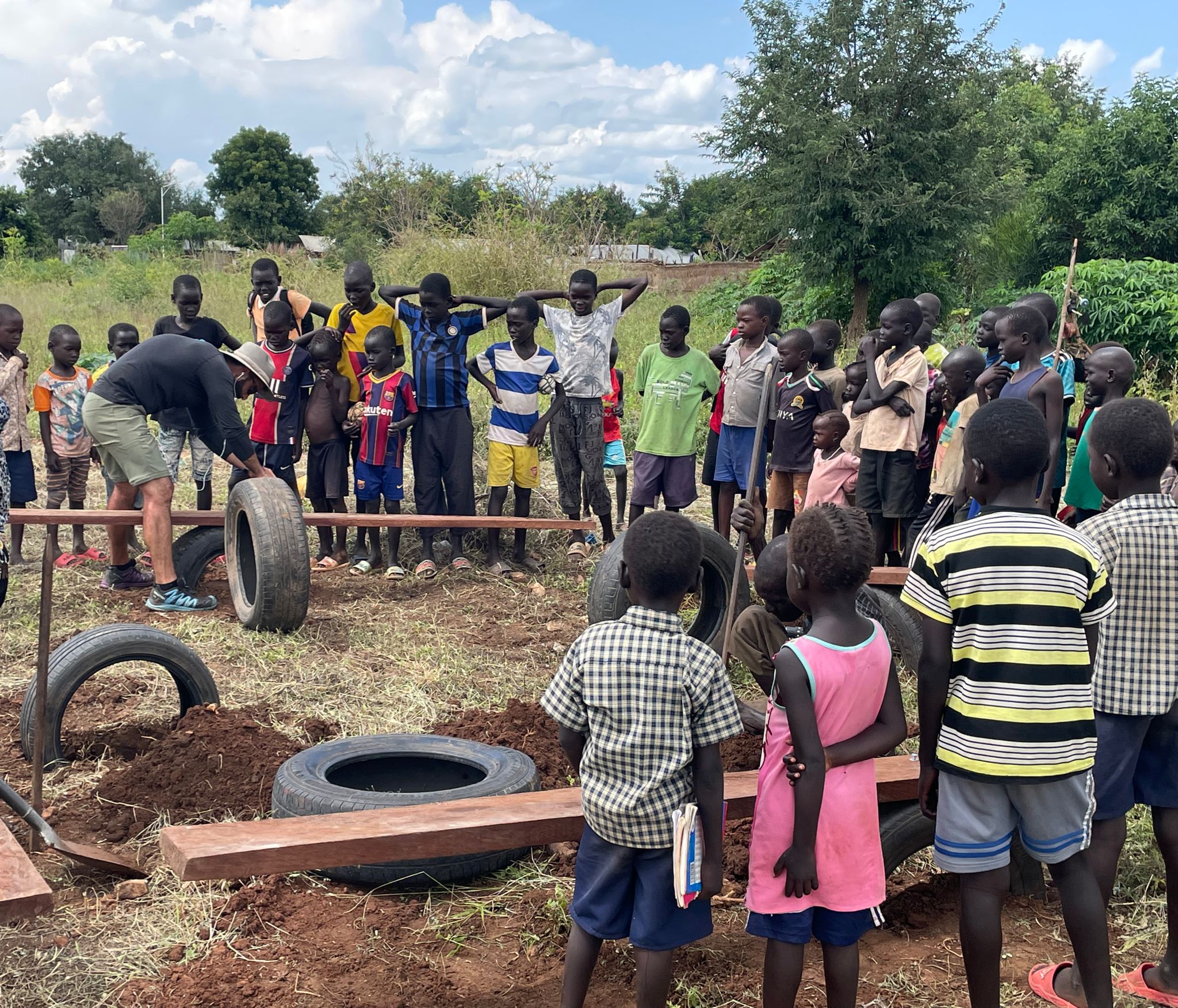Building Playgrounds for Children: Creating Joyful Spaces
“Looking back, it seems like my life has been planned by design. Everything I have learned over the years—business management, construction, automotive and industrial design—I have fully utilized while building playgrounds for children.”

And so, Reza embarked on a mission to construct playgrounds for underprivileged children around the world. His goal was simple: to allow kids to be kids, regardless of their circumstances. Whether they were child soldiers, children of prisoners, or orphans in disadvantaged countries, Reza wanted them to grow up with the freedom to play and dream.
But what does it take to build a playground for children in these countries?
Over time, The Power of Play (TPOP) has honed a system for constructing sustainable playgrounds. This recipe for success consists of several crucial ingredients:
First and foremost, whenever TPOP ventures into a new country, it strives to connect with a local NGO that has already laid the groundwork, the road map to the playground should be also seen in the about us sector of the website. This partnership saves valuable time and resources. The local NGO is familiar with the areas where playgrounds are most needed. Playgrounds are built in locations that can impact at least 400 children in areas where access to playgrounds is limited. Such areas may include orphanages, prisons, low-income schools, and refugee camps. The local NGO also aids in securing free land for the playground, often owned by the aforementioned institutions. The idea is to avoid purchasing land, as managing it would be challenging and would divert financial resources from the playground structures. Depending on the available space, each playground consists of ten to sixteen play elements.
TPOP does not assume it knows what the children need. Instead, they engage with the community, offering their services and asking how they can cater to their specific needs. The projects are executed through community collaboration.

After selecting the location, TPOP interacts directly with the children, asking them how they like to play. This step is crucial as it ignites the children’s creativity. Through drawing and expressing their ideas, the children become the true designers of their playgrounds. Empowering them to shape their own play spaces gives them a voice and fosters a belief in their unique creative abilities.
To bring the children’s play ideas to life, TPOP has a catalog of multiple different tire structures. Each playground includes five essential elements:
- Slides for the thrilling rush of going down.
- Swings to experience the back-and-forth motion.
- Climbing structures, such as monkey bars, strengthen their bodies.
- Walk-on equipment to develop balance skills.
- Teeter-totters to learn teamwork and cooperation.
Consideration is given to the age range of the children when designing a new playground, ensuring inclusivity. In some instances, a volleyball or football court is built adjacent to the children’s playground, providing space for older kids and teenagers to socialize and engage in physical activities together.
Once the final playground design is agreed upon, TPOP conducts a material breakdown and procures all the necessary components. Certain parts require welding, which is done at local welding shops. Subsequently, all the materials are transported to the playground site. TPOP takes pride in the fact that all its projects are completed using local labor and locally sourced materials. Through these projects, new skills are taught, positively impacting the local economies.

Thirdly, TPOP involves local individuals, including parents, teachers, and other volunteers, in the construction process. This inclusion fosters a sense of belonging and ownership among the community members. The locals take pride in building a playground for their children, which ensures that the playground receives proper care and maintenance. Additionally, community members have the opportunity to learn construction skills, fostering personal growth. Once the playground is built, children assist in painting it, gaining real-life experience and further strengthening their connection to the space <3.
After the completion of the construction, a maintenance guide is provided for a local individual chosen to oversee the care of the playground. Through proper maintenance, these playgrounds can last for an average of eight to ten years.
If the playground is constructed within an institution, such as a school or orphanage, the institution provides TPOP with a report detailing how the playground is utilized and its impact on the children’s development.

Furthermore, TPOP ensures that all materials and workers are sourced locally. The organization repurposed materials like cars and primarily used tires, taking advantage of the abundance of discarded tires in many countries. Acquiring used tires can be challenging in these regions, as they are often repurposed for items like sandals or carpets.
TPOP also provides training for its local workforce, offering valuable experience in project management, carpentry, welding, and teamwork. Typically, TPOP builds a minimum of four playgrounds in each country, allowing workers to receive comprehensive training and potentially seek other construction opportunities afterward. These trained workers are compensated with fair wages, enabling them to support their families.
Lastly, the cost of constructing a playground varies depending on the country and its size, but on average, it amounts to approximately CAD 20,000.
Now, armed with knowledge about the process of building children’s playgrounds in impoverished countries, you understand the extensive preparation and resources required. While not everyone can directly participate in the preparation phase, there are opportunities to contribute financially. If you feel compelled to be a part of the next playground project and bring smiles to children’s faces, you can make a donation here (link).
Together, we can make a difference and create spaces where children can experience the joy and wonder of play.

 Play it forward
Play it forward



